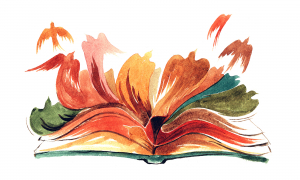The Felt Sense: A practice for opening to inner wisdom & peace
I want to start with the invitation to take a deep breath, and a slower exhale.
*** Breathe IN ***
******** Breathe OUT ********
Shift from Thinking to Feeling:
How does it feel, this breath and this slowing down?
Feel the movement of air as you breathe into the nostrils,
as the chest expands,
and the lungs expand.
Breathe so that the belly expands on the inhale just slightly.
{Repeat a few times}

This simple breathing practice helps us quiet the mind. With a quieted mind, we can experience “the felt sense” of the body.
What do I mean by the felt sense?
I completed a two year training in a very body centered method of psychotherapy called Hakomi. One of the primary distinctions was called the felt sense. Tuning into the felt sense is a way to shift ourselves from any story we may find ourselves lost in. Let me explain how this works.
In Hakomi, they would say: listen to the storyteller, rather than the story.
What does that mean?
My story was (it’s less now) that I grew up in a home where I didn’t feel safe. The adults were not behaving in a way that was very adult, or appropriate.
Now, if you were only listening to my story, it may provoke curiosity and take you into a lot of sideroad questions about who, when and why…the drama of it all. By contrast, if you listen beyond the story into the storyteller, you can identify fear and anxiety. There was a sense of not being safe..
Identifying a core emotion (like fear) allows us to work with the felt sense I spoke about above. If my client says, “I feel scared,” I might ask, “Where in your body do you feel that fear?” And we keep focused there — on embodiment, on the felt sense.
We put aside the story of why I feel afraid, and focus on the storyteller, the embodiment of how it feels. Where in your body do you feel that fear? I feel that fear in my belly. How does it show up? It shows up as tension, and it shows up as difficulty digesting food. And at this moment, my stomach is tight.
We are discovering the different distinctions of tightness that show up. When we give attention to the felt sense, then understanding arises. Yes, it comes as a kind of thought, but it’s different than figuring it out. From there, we start to move the story’s stuck energy out of the body, freeing space so that there’s more flow of energy or chi (as Taoists would say). More freedom!

Stories keep tension stuck in our body because we have been telling and retelling the tale, sometimes over a lifetime. But after separating the story from the felt sense, now, when I feel anxiety come up, I have another option. I can sit in the present moment with anxiety and take several deep slow breaths and listen for what anxiety needs. I am present and compassionate with what I feel, and slow down. As the story arises: “it’s because of what so and so said to me or did to me, or I’m lonely, or this and that…” I simply refocus on the feeling of the storyteller, rather than lose myself in the story. Doing this transforms the flow of energy in our body!
This is a brief taste of learning to be embodied. When feelings really are too much and too scary to process ourselves, then we work with a practitioner, like myself, who can help us be present in the body and not leave. Hakomi is a beautiful training. It changed how I live my life and the freedom I feel. Embodiment is now second nature; it’s how I feel into the world.
We learn more about this process in the 6 month Tantra Program.




Leave a Reply
Want to join the discussion?Feel free to contribute!